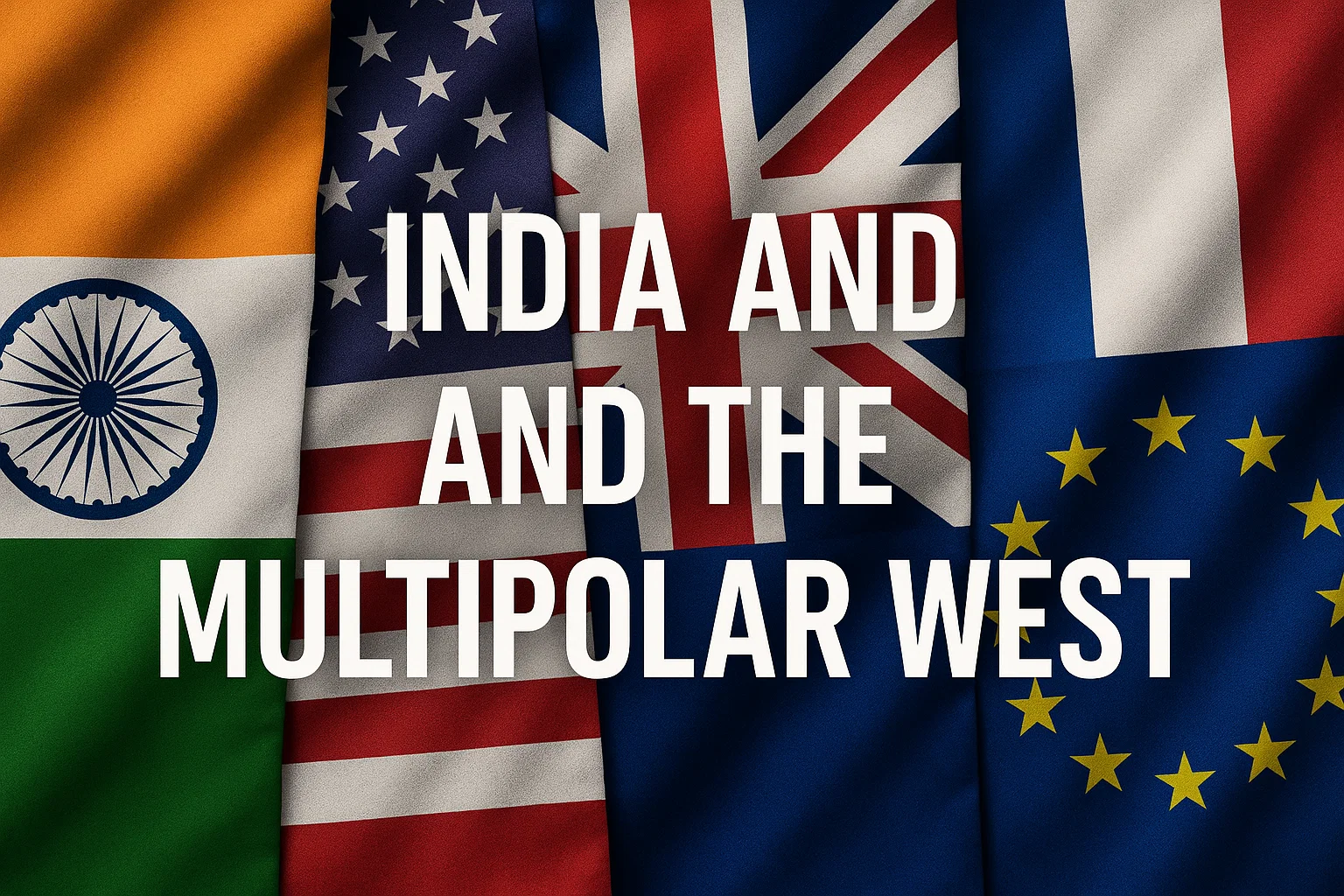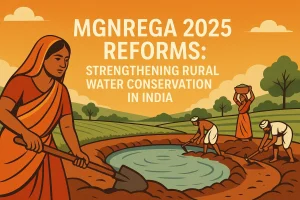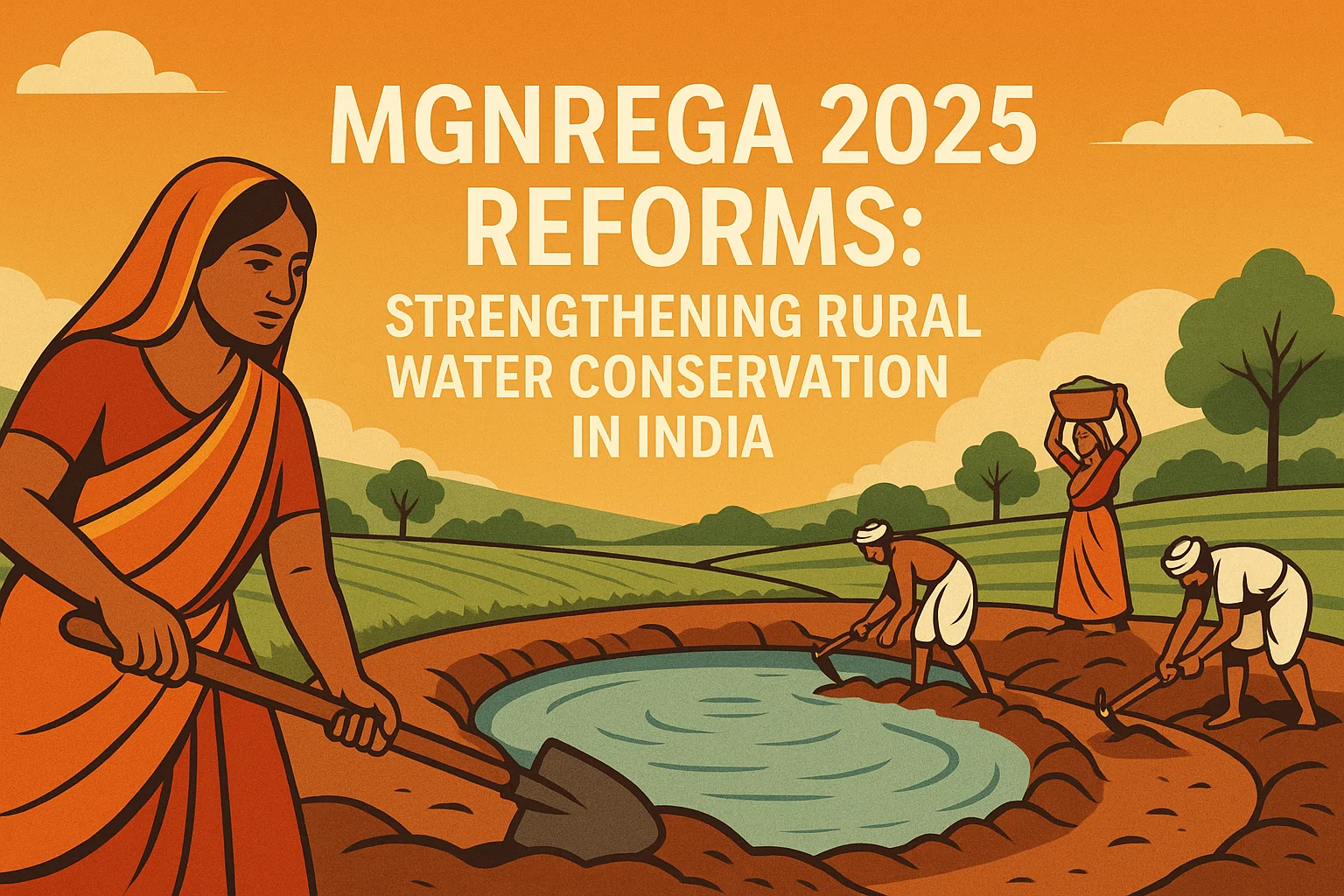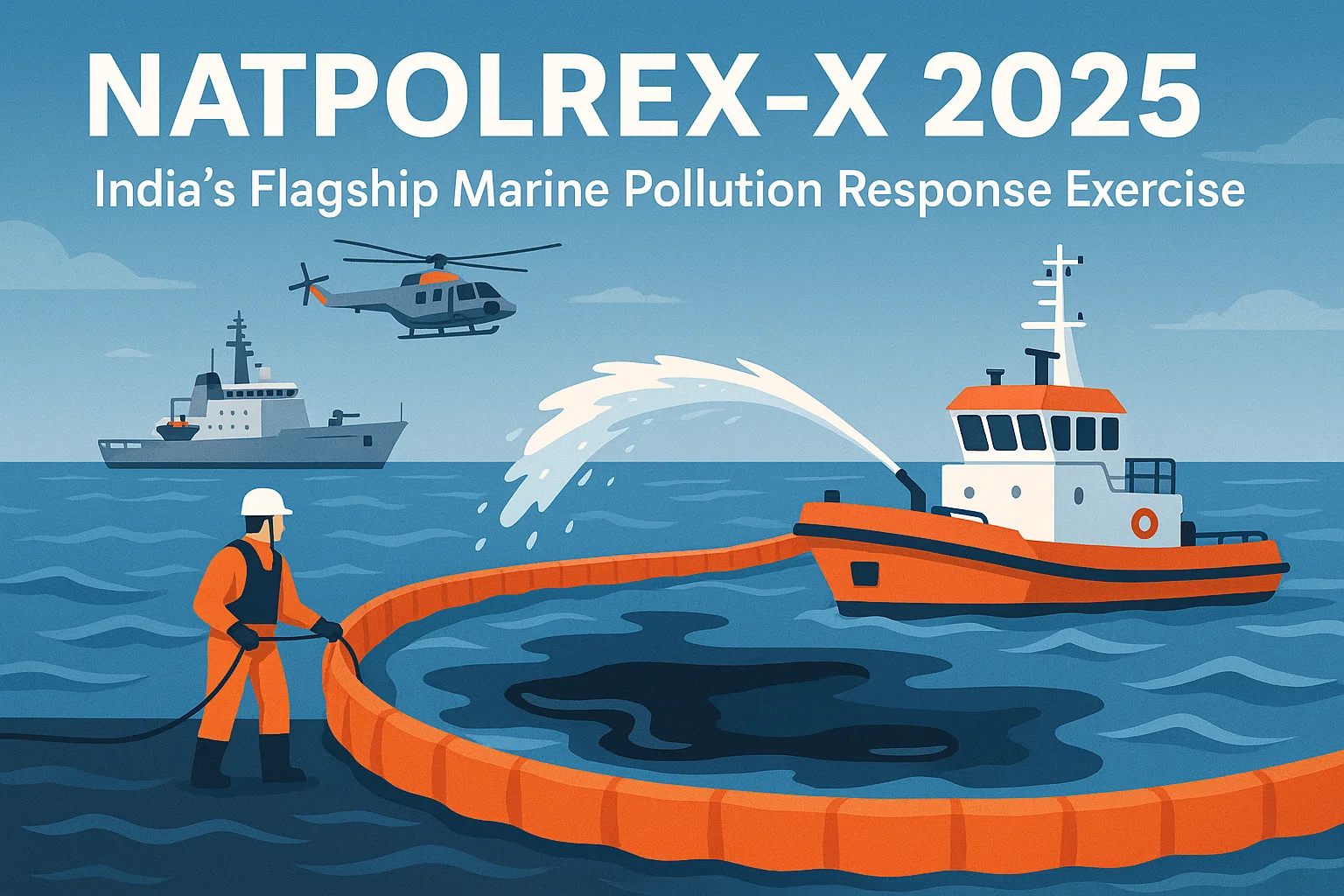India and the Multipolar West
Explore C. Raja Mohan’s insights on a multipolar West and its impact on India. Learn how Europe’s autonomy, US shifts, and global power distribution create opportunities for trade, defence, and strategic partnerships.
Introduction
Raja Mohan’s article, “West is Turning Multipolar” (The Indian Express, October 8, 2025), examines how the Western world—once seen as a single, united bloc led by the United States—is now changing into something more complex and plural. Europe, America, and other Western powers are redefining their roles amid global shifts. This transformation is not about Western decline but about a new distribution of power within it. This essay argues that while this “multipolar West” offers India greater opportunities for partnership and flexibility, it also presents fresh challenges that demand stronger domestic foundations, diplomatic skill, and adaptability.
Changing West
For most of the last century, “the West” referred to a group of countries bound by shared values, economic systems, and security alliances. After the Second World War, the United States led this group, creating what many called the “liberal international order.” Europe, Japan, and other allies largely followed Washington’s leadership.
But this unity is fading. The end of the Cold War brought new confidence and expansion, yet that unipolar moment did not last. The return of Russian assertiveness, the rapid rise of China, and increasing political divisions within the United States have all weakened the coherence of the West. Many European leaders now feel that relying entirely on America is risky. As a result, the Western alliance is evolving into a “plural West”—one with several centres of power rather than a single leader.
This change is significant because it alters how other countries, especially India, relate to the West. It is no longer a single partner or opponent but a set of potential collaborators with differing priorities.
Europe’s Autonomy
A key concept in this evolution is European strategic autonomy—Europe’s effort to act independently while still cooperating with allies like the US and NATO. Strategic autonomy means the ability to make decisions guided by European interests and values, not total independence or isolation. It is about strengthening democracy, innovation, and security so that Europe can act when needed, whether or not Washington agrees.
This idea grew stronger after years of American unpredictability. The “America First” approach of President Trump, for example, led many Europeans to wonder if the US would still guarantee their security. Events like the war in Ukraine and tensions over China deepened that concern. European leaders began calling for a Europe that can “stand on its own feet”—economically, technologically, and militarily.
Autonomy does not mean abandoning the US. Instead, it is about balance—Europe taking more responsibility for its own security, economy, and global influence. This shift marks a major transformation in Western politics: a more self-reliant Europe within a still-connected West.
Why It Matters
The search for autonomy has deep roots in Europe’s political and economic development. Over decades, the European Union has grown from a trade area into a political and monetary union, gaining the ability to influence world affairs. But unity is still incomplete. Differences between Eastern and Western Europe—such as how to deal with Russia or manage migration—often limit collective action.
At the same time, global conditions make autonomy urgent. The US is still powerful but increasingly focused inward. China’s rise challenges Western influence, while conflicts in nearby regions force Europe to respond to crises without always depending on America. Europe’s success or failure in achieving autonomy will shape how the West functions in the future—and how countries like India can work with it.
Beyond Defence
Strategic autonomy goes beyond armies or defence budgets. It covers technology, energy, climate, migration, and economic policy. The idea is for Europe to build resilience—being able to produce what it needs, innovate in key industries, and maintain fair trade links.
For instance, Europe aims to lead in clean energy, digital regulation, and sustainable infrastructure. By doing so, it can cooperate with others, including India, on equal footing. This multidimensional approach gives India new spaces to collaborate—with European governments, companies, and research networks—without getting tied to one single power bloc.
The broader the scope of Europe’s autonomy, the wider the scope for India’s engagement.
Balancing Risks
Still, autonomy is not without risks. Some critics say Europe is too dependent on the US to act alone. Others worry that the drive for independence could lead to economic protectionism or internal division. These tensions mirror the wider uncertainty of a plural West.
The challenge is to balance cooperation with independence. If the US retreats too far, Europe may struggle to respond to global crises. If Europe over-corrects and isolates itself, it could weaken the transatlantic bond that has ensured peace for decades.
For India, these contradictions mean opportunity and caution in equal measure. A diverse West opens new partnerships, but instability in the West can also harm the global economy and security environment India depends on.
American Shifts
While Europe redefines itself, the United States is also changing. Domestic politics have become more polarised. Many Americans now question long-term foreign commitments. Some favour focusing on home industries and borders rather than leading global alliances.
This inward turn forces allies to rethink their dependence on Washington. It also encourages regional powers to take more initiative. The US remains militarily dominant, but its willingness to act collectively is no longer guaranteed.
For India, this transformation means managing relations with a United States that remains powerful but sometimes unpredictable. Delhi must balance cooperation on security and technology with flexibility in case US priorities shift again.
India’s Openings
In this environment, India finds both challenges and opportunities. A “loosely knit West” gives Delhi space to engage different partners without choosing sides. It can build cooperation with the US on technology and defence, expand trade with Europe, and deepen ties with Britain, Japan, and Australia—all while maintaining its independent stance toward Russia and China.
Recent moves illustrate this. India has signed a trade and investment agreement with the European Free Trade Association and continues negotiations with the European Union. European nations are showing greater interest in India’s growing economy and stable democracy. They view India as a key player in keeping the Indo-Pacific region open and balanced.
For India, engaging a more plural West is not just about diplomacy but also about practical gains—access to markets, advanced technology, and investment in infrastructure and manufacturing.
Shared Interests
The idea of a “plural West” means cooperation on shared challenges rather than fixed alliances. Europe and India already work together on renewable energy, digital infrastructure, and climate action. Programmes such as the EU’s Global Gateway aim to fund sustainable projects across Asia and Africa, often in partnership with India.
This aligns with India’s own goals: to strengthen supply chains, expand green technology, and improve digital connectivity. It also allows India to play a role in shaping global rules—on data, trade, and climate—that reflect its interests as a developing power.
However, to make the most of these partnerships, India needs stable policies at home—transparent regulations, investment-friendly reforms, and efficient governance. External opportunities mean little if internal capacity is weak.
Domestic Challenge
The greatest test for India may come from within. To benefit from the multipolar West, India must strengthen its economy and institutions. Manufacturing capacity, research investment, and education reform are crucial to remain competitive.
Diplomatic agility must be matched by economic readiness. For example, trade agreements with Europe will require high product standards and consistent policies. Defence partnerships will depend on the success of programmes like Make in India and on the ability to absorb advanced technology.
If India modernises its domestic systems, it can act as both a reliable partner and an independent pole of power. If not, it risks missing out on the new opportunities that Western pluralism offers.
Communication and Perception
Another lesson from recent years is that narratives—the stories nations tell—matter as much as material power. Western countries often speak of unity, even when divided, or highlight autonomy, even when dependent. These strategic narratives shape how countries perceive each other.
India, too, must manage its narrative carefully. It must project confidence and consistency to attract investment and trust. Clear communication of intent—whether on trade, defence, or foreign relations—helps avoid misunderstandings and strengthens partnerships. In a world of shifting alliances, perception can determine whether opportunities become realities.
Global Fluidity
The new order brings freedom but also fragility. When alliances loosen, coordination in crises becomes harder. A fragmented West could respond too slowly to threats like Russian aggression or Chinese expansion. For India, which relies on open sea routes and stable global markets, such uncertainty is risky.
Therefore, India must hedge—building multiple partnerships across regions and ensuring no single dependency. Working with Europe on technology, engaging the US on security, and maintaining regional coalitions with Japan, Australia, and ASEAN nations can create stability through diversity.
Path Forward
The key for India lies in a strategy of patient activism—being proactive but not impulsive. It should deepen ties with different Western centres—Washington, London, Paris, Berlin—based on shared interests, not ideology. This approach mirrors how Europe itself balances relations within a plural West.
At the same time, India must continue strengthening its presence in multilateral forums—like the G20, BRICS, and Quad—while advocating for fairer global institutions. The aim is to be a bridge between old and emerging powers, between developed and developing worlds.
Such a balanced strategy requires both internal reform and external agility. Only a strong domestic foundation can sustain an active global role.
Conclusion
The West is no longer a single, uniform bloc but a network of shifting partnerships and independent centres of power. This “multipolar West” creates both uncertainty and opportunity. For India, it opens doors to collaborate more flexibly—working with the US, engaging Europe, and building regional coalitions—without surrendering strategic autonomy.
Yet, the promise of this moment depends on India’s capacity to act decisively and reform internally. The future will reward nations that are adaptable, innovative, and resilient. As global power becomes more distributed, India’s challenge is to translate diplomatic skill into long-term strength—becoming not merely a participant but a shaper of the new international order.
Subscribe to our Youtube Channel for more Valuable Content – TheStudyias
Download the App to Subscribe to our Courses – Thestudyias
The Source’s Authority and Ownership of the Article is Claimed By THE STUDY IAS BY MANIKANT SINGH



